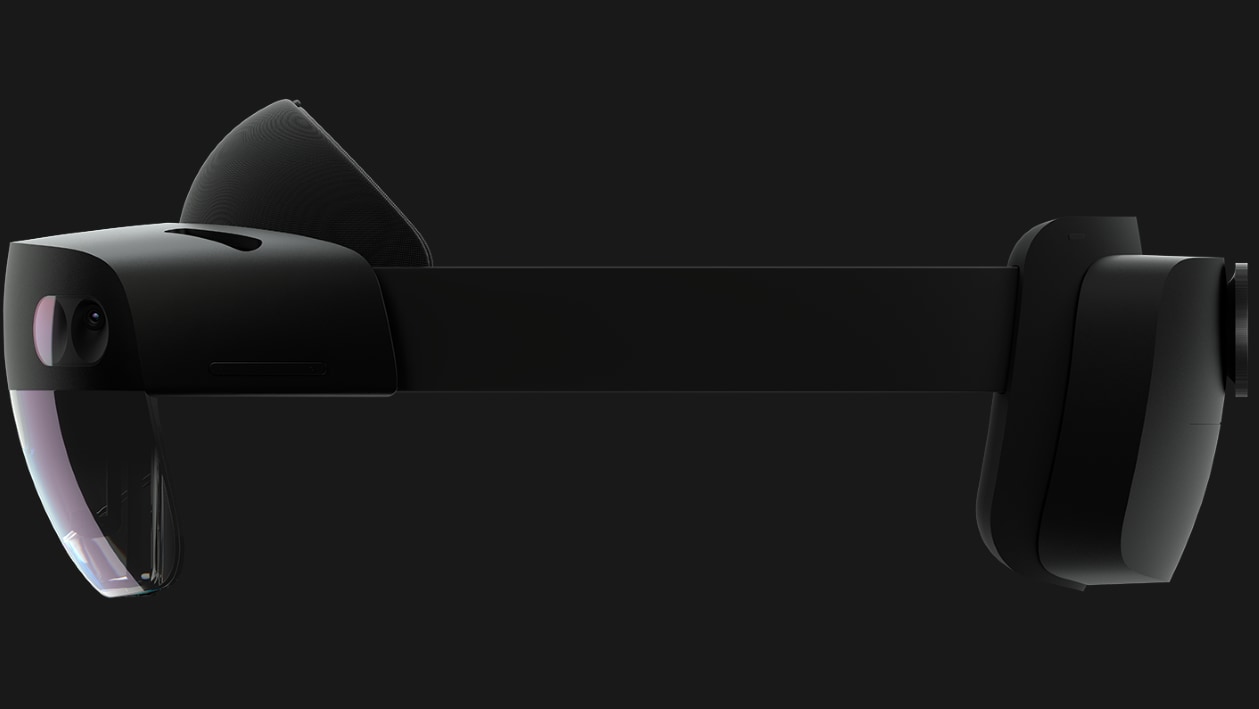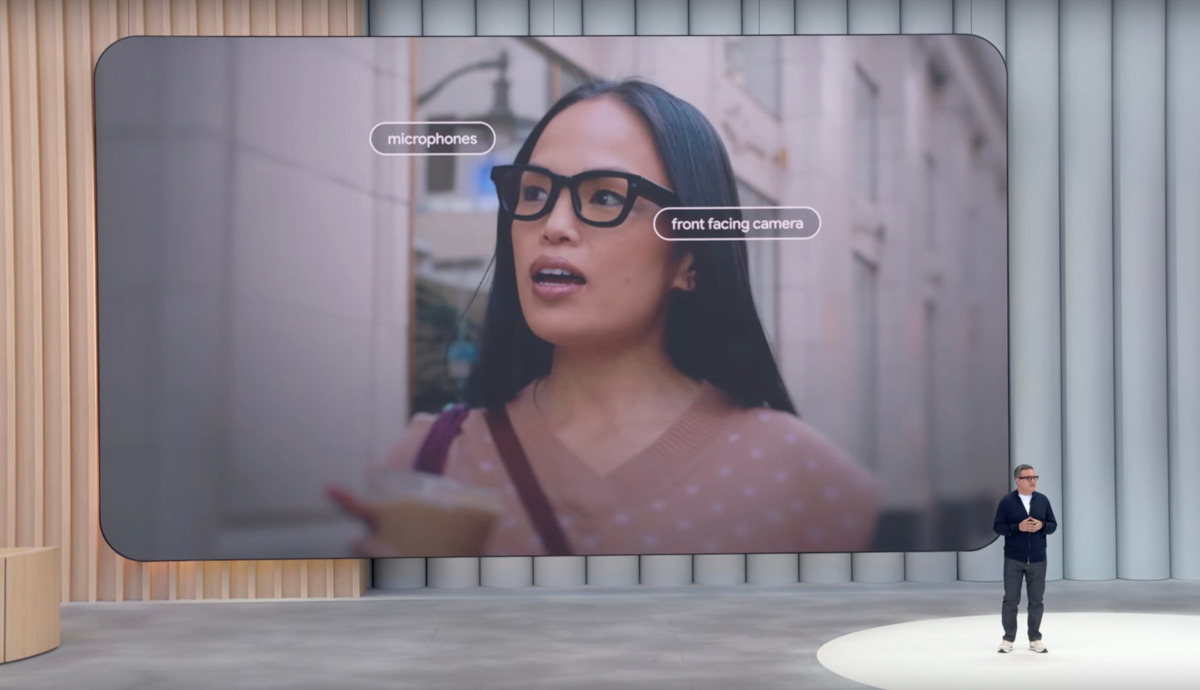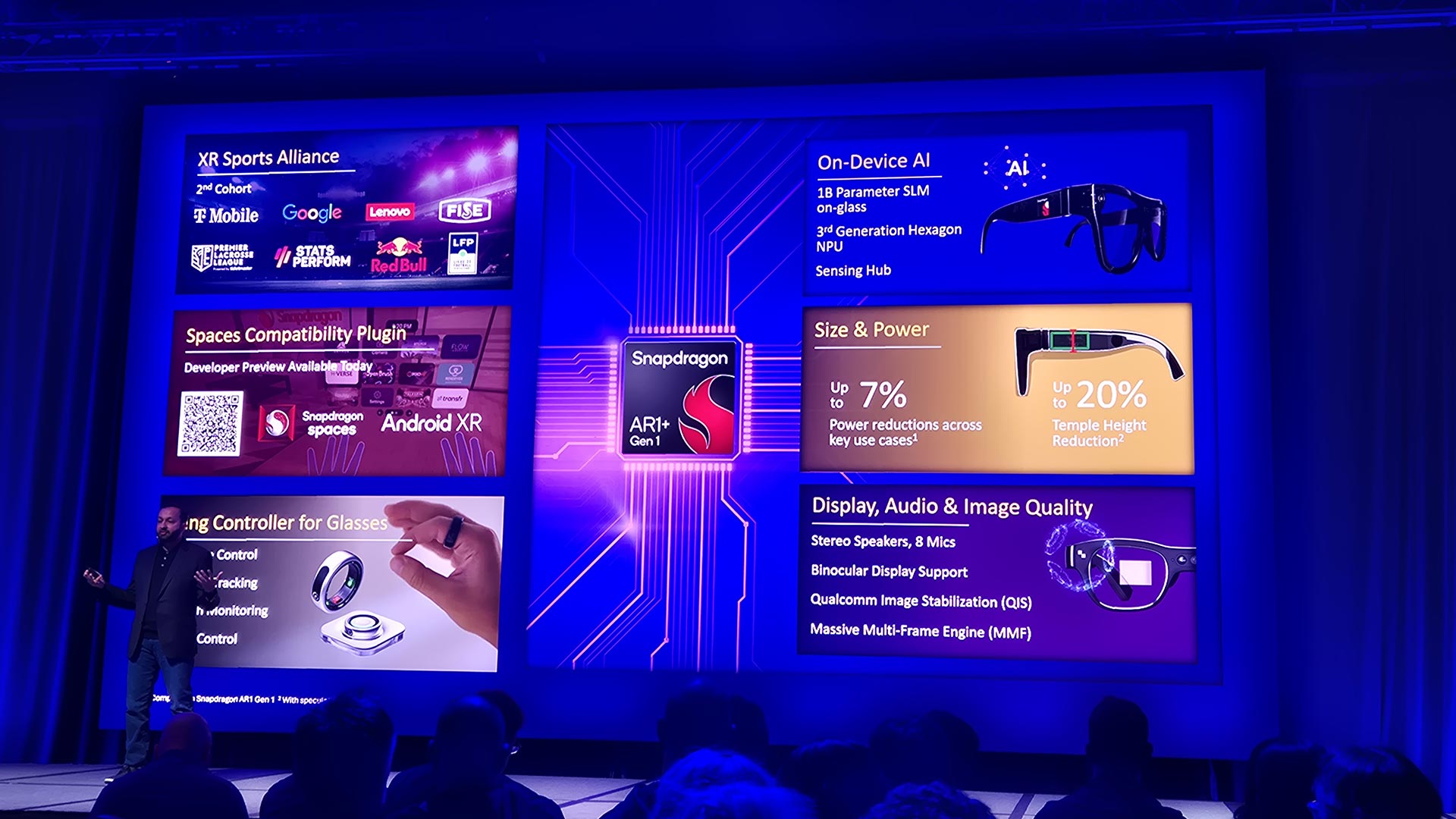All you need to know on HoloLens 2
Today, at MWC 2019, Alex Kipman went on stage together with Satya Nadella and Julia White to announce the new HoloLens 2.
They teased a lot of interesting features and services of the
FOV
First things first: we were all curious about the field of view of the new HoloLens. There was a patent claiming that Microsoft was able to double the field of view with regard to the original HoloLens and it seems that that rumor was true: Alex Kipman has claimed that the FOV of the new HoloLens is MORE THAN DOUBLE than the FOV of the original one.

Considering that HL 1 had a FOV around 30-35° (the exact number has never been disclosed), I think that a reasonable guess is around 70-75°, that is a massive improvement, that will make AR more usable.
CNET’s journalist Scott Stein, that has been able to try the headset at Microsoft headquarters, has reported that the diagonal field of view of the new HoloLens is 52°. Lauren Goode of Wired has confirmed this datum.
The first HoloLens had a 34-degree diagonal FOV; the new headset’s
Lauren Goode, Wiredfiel of view has “more than doubled,” Kipman says, to a 52-degree diagonal field of view. (Microsoft declined to share exact measurements for this neweyebox , saying that the x-axis and y-axis are not the best way to think about the FOV improvements. But much of the expansion was in the vertical dimension.)
Resolution
Incrementing the FOV usually means reducing the perceived resolution of the display, because the pixels have to cover a bigger area. But Microsoft, thanks to innovative 2K MEMS displays, has managed to keep the same high-quality pixel density of the HoloLens 1, that is 47 PPD (pixels per degree). The value is not random, it is the pixel density required to read
Refresh Rate
According to Stein, it is 120 Hz.
Comfort

The comfort has been improved by a 3X factor. This is what Kipman says, even if I think that defining the comfort in a quantitative way is a bit hard. Microsoft has conducted a study on thousands of people, to design a device that can fit a lot of different heads of different people and that is also able to accommodate glasses. The new design appears incredibly well balanced and it has been made all with carbon fiber. We don’t know the weight, but it seems light, though. It

For sure it was impressive to see Alex putting the headset on and off in instants: it seems that the times where you had to lose a lot of time (and patience) in rotating the closing knob a lot of times to put the headset on and off are gone away. It seems the Vive Focus in terms of easiness of setup, maybe it is even better. You just put it on and off as if it were a hat.
The final touch is the flip-up display: you can return to reality without removing the headset. This is something we all hoped with the v1 and that has become reality with the v2.

This new HoloLens has for sure made a huge leap forward for what concerns comfort.
Login
The new HoloLens uses its integrated eye tracking to perform user authentication via iris recognition. This can be important for sectors where security is a must (
UX
The new HoloLens always features Windows 10 (but this time a more modular version called Windows Core). We had a brief glimpse of its UI and it seemed an improvement of the one of HoloLens v1.

For what regards the user experience, instead, there are great innovations. The new HoloLens features:
- Eye tracking
- Full hands tracking (a la Leap Motion, with 25 points tracked per han)
- Voice commands understanding
During a demo on stage, it has been shown that the hands are the primary means of interface with the UI of HoloLens 2. The interface is fully reactive to the user hands (the objects get lit where the hands touch them, etc…) and the hands are used for everything. A Microsoft employee on stage used the hands to enlarge objects (just by grabbing the corners of the elements and pulling them apart), to move them (just by grabbing and moving them), to rotate them (just by spinning them with the hands). All felt very very natural… there was no need to explain the

Microsoft has also showcased that it has invented a lot of new UI controls (sliders, buttons, etc…) that reacts to the hands exactly as you would imagine them to. These will substitute the traditional 2D elements in the future.
All this study of the UX using the hands reminded me a lot of Leap Motion’s work, exactly as the fact that Microsoft plans to create a sense of phantom touch of the hands by the use of visual cues and sound cues that pop when you touch virtual objects with your hands. As Alex of Leap Motion explained me, using carefully studied sounds and visual feedback when the user touches a virtual object, it is possible to create a sense of fake touch, that can make the experience more realistic.
Regarding the voice, it was used in the demo for more complex commands, like giving the command to a window to become sticky and follow the user wherever she went. She also used the voice to type a message.
The eye tracking will also be integrated in the UX in a smart way: for instance, when you will look at the bottom of a text you are reading on a webpage, the system will scroll the page automatically for you, because it will detect that you are at the bottom of the page and want to read more.
As you can see, Microsoft has carefully studied how to incorporate all the various types of commands so that to make the user experience effortless and natural. Really kudos to them. BUT, before being so enthusiastic about it, I would like to try it: using the hands continuously may be tiresome and with HoloLens 1 I often reverted using the clicker and not the air-tap gesture. These are things that a video can’t convey and must be tried.
Enterprise services

Microsoft is clearly aiming at enterprises with this HoloLens
There have been two very important announcements that will appeal to enterprises:
- Microsoft will offer a full suite to make companies integrate mixed reality easier and faster. This means that sectors like healthcare, architecture, etc… will be able to take this solution offered by Microsoft and solve most of their common pain points out of the box. With Microsoft Dynamics Guide 365, for instance, it will be possible to create easily an AR solution to help maintenance workers. I am talking about all those AR applications that let a maintenance operator see the problems in a faulty industrial machine and then all the instructions on how to fix them in AR. And that let him/her communicate with other workers or with the control room easily. This was one of the most required AR applications, and I think that lots of startups that was offering a similar service are going to die. And there will be similar solutions offered in the fields of architecture, healthcare, etc…;

- HoloLens Customization Program: enterprises will be able to contact Microsoft so that to have a modified version of the HoloLens 2 that more fits their needs. The first company that will benefit from this program will be Trimble, that is going to produce a safety helmet with integrated HoloLens 2.

Azure
Microsoft with Nadella has switched from a company focused on products to one focused on services (more or less) and Azure (the cloud service of Microsoft) is its little shiny diamond.
HoloLens and Azure will be deeply interconnected and this means that companies using HoloLens will be able to exploit the power of the cloud, of IoT integration and of artificial intelligence services offered by Microsoft in an easy way. But there’s more: since the HoloLens will feature a local AI coprocessor, some AI operations will be possible locally, without connecting the device to the cloud.

With HoloLens 2, Microsoft launches for the first time two Mixed Reality services for Azure:
- Spatial anchors: points in the physical space that can be shared between applications coded for ARCore, ARKit, and HoloLens. This will allow the creation of experiences shared by different people in the world that use different hardware. They will be able to see the same virtual elements in the same physical positions of the world and so interact together in mixed reality. Microsoft is clearly aiming at the AR Cloud, that it calls “The Internet of Holograms”;
- Remote Rendering: very complex meshes may be rendered on the cloud and visualized on the
HoloLens , as if they were rendered locally. I wonder if this will require some kind of 5G magic.

Open future
Alex Kipman has said that he wants the immersive future not to be a walled garden, so Microsoft is taking a stance in favor of open-ness with 3 key actions:
- Open app store: every kind of app store will be welcome to run on HoloLens (even Steam);
- Open web browser: every browser will be welcome… and in fact, Mozilla Realities will come to HoloLens 2;
- Open API: Microsoft is working for open APIs and open collaboration within different actors of the XR ecosystem (it is in the
OpenXR consortium).
Unreal SDK
Tim Sweeney, the CEO of Unreal, has made a fast
Connectivity
The new HoloLens won’t use LTE connection and will rely only on Wi-fi networks, exactly as the previous one. In my opinion, that’s really a missed opportunity to expand the possibility of the uses of the device.
Battery duration
It will be more or less like with HoloLens 1: 3-4 hours.
Full specs

| Display | |
|---|---|
| Optics | See-through holographic lenses (waveguides) |
| Resolution | 2k 3:2 light engines |
| Holographic density | >2.5k radiants (light points per radian) |
| Eye-based rendering | Display optimization for 3D eye position |
| Sensors | |
|---|---|
| Head tracking | |
| Eye tracking | |
| Depth | Azure Kinect sensor |
| IMU | Accelerometer, gyroscope, magnetometer |
| Camera | 8MP stills, 1080p30 video |
| Audio & speech | |
|---|---|
| Microphone array | 5 channels |
| Speakers | Built-in, spatial audio |
| Human understanding | |
|---|---|
| Hand tracking | Two-handed fully articulated model, direct manipulation |
| Eye tracking | Real-time tracking |
| Voice | Command and control on-device, Natural Language with internet connectivity |
| Environment understanding | |
|---|---|
| 6DoF tracking | World-scale positional tracking |
| Spatial mapping | Real-time environment mesh |
| Mixed reality capture | Mixed hologram and physical environment photos and videos |
| Compute & connectivity | |
|---|---|
| SoC | Qualcomm Snapdragon 850 Compute Platform |
| HPU | 2nd generation custom-built holographic processing unit |
| WiFi | 802.11ac 2×2 |
| Bluetooth | 5.0 |
| USB | USB Type-C |
| Fit |
|---|
| Single size |
| Fits over glasses |
| Software |
|---|
| Windows Holographic Operating System |
| Edge |
| Dynamics 365 Remote Assist |
| Dynamics 365 Layout |
| Dynamics 365 Guides |
| 3D Viewer |
| OneDrive for Business |
Box

When you buy the HoloLens 2, inside the box you will find the following items:
- HoloLens 2 device
- Carrying case
- Overhead strap
- Microfiber cloth
- Charger
- USB-C cable
It’s interesting to see that there’s no clicker anymore, so Microsoft really bets on the bare hands UX it has designed.
Price and release date

This is the part of the article where you cry.
The good news is that you can preorder the device now at this page. (The shipping date is still unclear, though)
The bad news is the price. You can buy the new HoloLens in two different ways:
- As a service, paying $125 per month to have the device plus the Dynamics 365 services described above;
- As a whole, buying the device only (no services) with a
one-time-fee of $3500. Notice that this is the “enterprise” version (that with the HL 1 was priced at $5000) and we don’t know if there will be a cheaper “developer” edition.
This is a clear indicator that Microsoft is interested only in the enterprise sector, and specifically the big enterprise sector.

Hands on
As I have already said, Scott Stein of CNET has been able to test the device and he reported that it is a great product. Anyway, there are still some flaws due to the fact that AR is not a mature technology yet: e.g. when following the AR instructions of Microsoft Dynamics 365, he found that sometimes the virtual arrows of the instructions were not exactly pointing to the right physical elements that he had to manipulate and this may make the workers perform wrong actions.
You can read the article with his full hands-on here.
Final commentary
HoloLens 2 is a big step forward with respect to HoloLens 1. It is better in just everything and it also provides better services for enterprises, that are its clear target market. And in that market, I foresee no valid competitor: there’s no device offering the same quality level of hardware, user interface and services.
Regarding the general consumers, the situations
I hope you enjoyed this post and if so, please tell me what you think about the HoloLens 2 here in the comments or
(Header image by Microsoft)
Disclaimer: this blog contains advertisement and affiliate links to sustain itself. If you click on an affiliate link, I'll be very happy because I'll earn a small commission on your purchase. You can find my boring full disclosure here.



